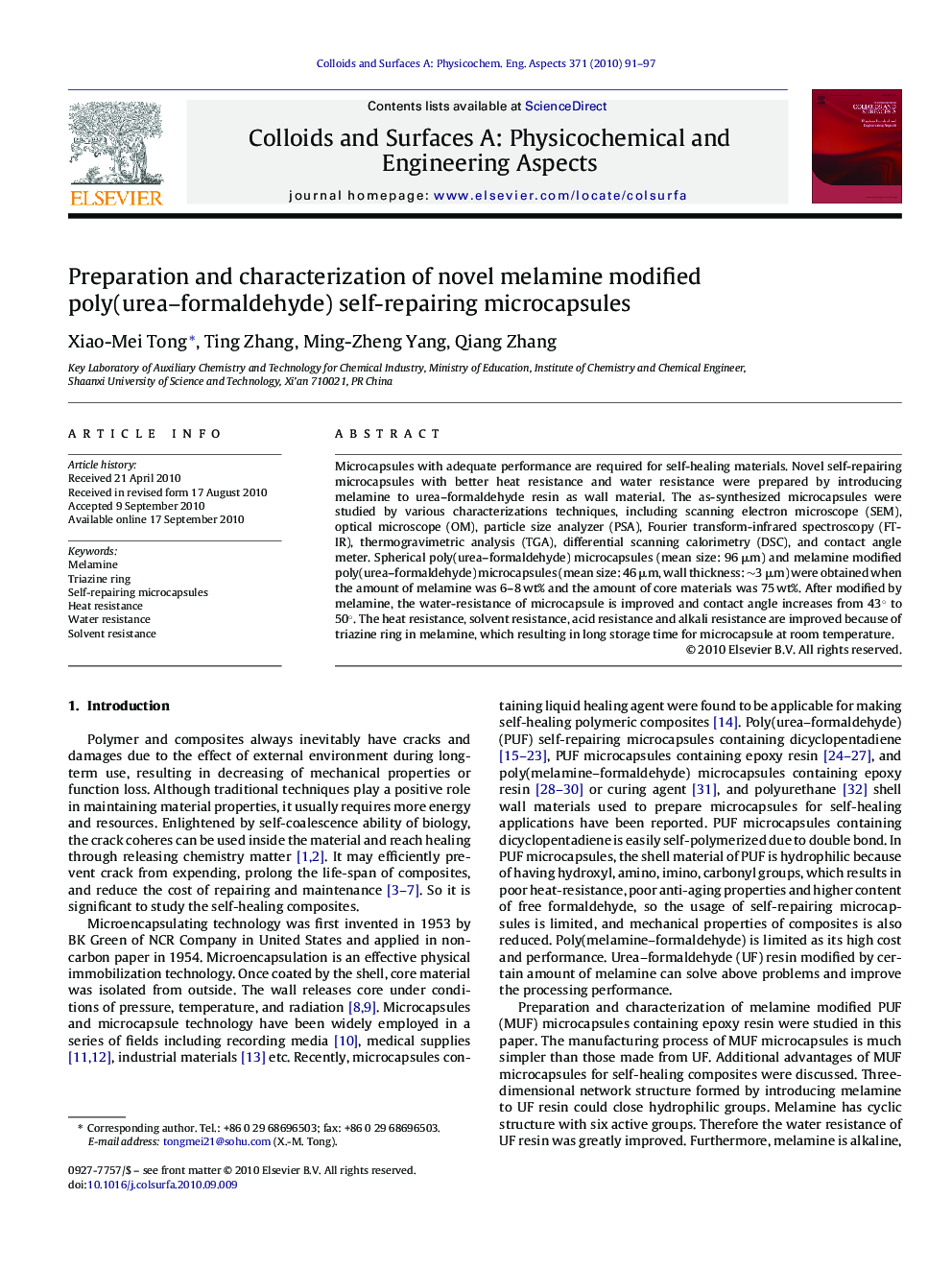| Article ID | Journal | Published Year | Pages | File Type |
|---|---|---|---|---|
| 595115 | Colloids and Surfaces A: Physicochemical and Engineering Aspects | 2010 | 7 Pages |
Microcapsules with adequate performance are required for self-healing materials. Novel self-repairing microcapsules with better heat resistance and water resistance were prepared by introducing melamine to urea–formaldehyde resin as wall material. The as-synthesized microcapsules were studied by various characterizations techniques, including scanning electron microscope (SEM), optical microscope (OM), particle size analyzer (PSA), Fourier transform-infrared spectroscopy (FT-IR), thermogravimetric analysis (TGA), differential scanning calorimetry (DSC), and contact angle meter. Spherical poly(urea–formaldehyde) microcapsules (mean size: 96 μm) and melamine modified poly(urea–formaldehyde) microcapsules (mean size: 46 μm, wall thickness: ∼3 μm) were obtained when the amount of melamine was 6–8 wt% and the amount of core materials was 75 wt%. After modified by melamine, the water-resistance of microcapsule is improved and contact angle increases from 43° to 50°. The heat resistance, solvent resistance, acid resistance and alkali resistance are improved because of triazine ring in melamine, which resulting in long storage time for microcapsule at room temperature.
Research highlights▶ Novel self-repairing microcapsules (mean size: 46 μm, wall thickness: ∼3 μm) were prepared by introducing melamine to urea–formaldehyde resin as wall material. ▶ The heat-resistance of melamine modified microcapsules increases nearly 10 °C. ▶ The water-resistance of melamine modified microcapsules is improved and contact angle increases from 43° to 50°. ▶ The solvent resistance, acid resistance and alkali resistance of melamine modified microcapsules are improved.
